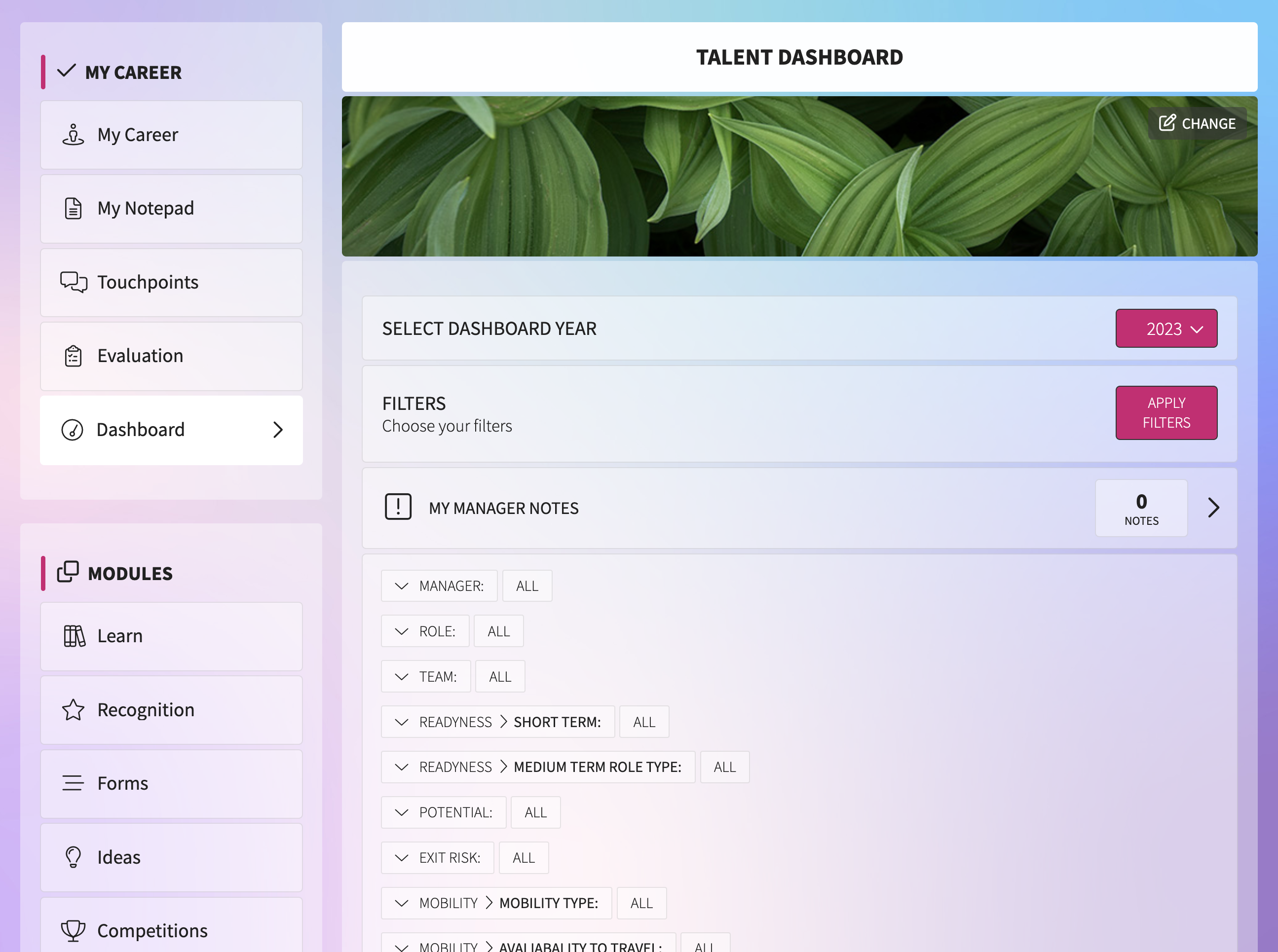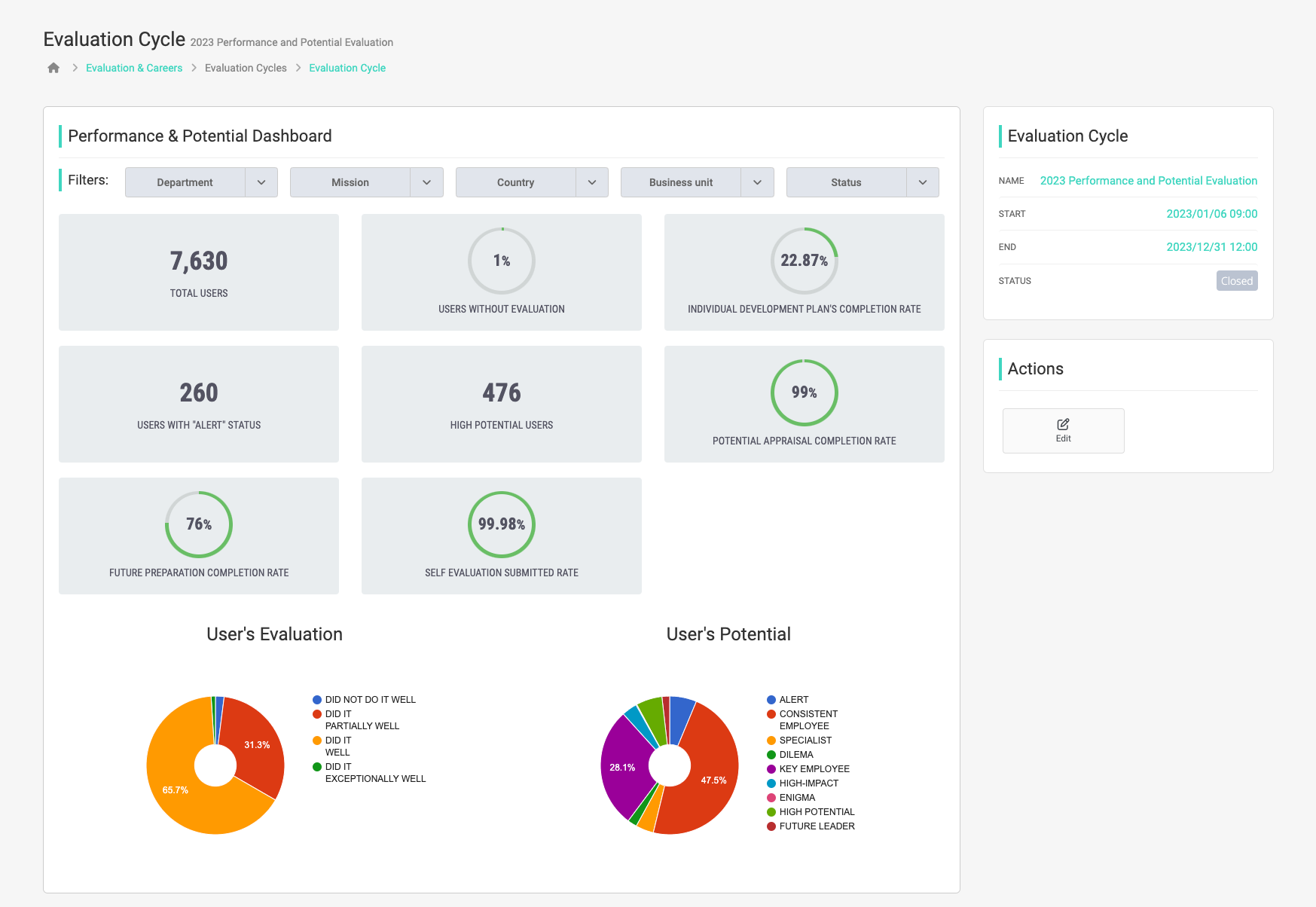Why should you implement a Performance Appraisal programme?
In this article we will give you a complete guide to Performance Appraisal.
A transversal, fair, agile and effective performance assessment programme is decisive in a modern organisation. Never have the challenges been so demanding, both in terms of attracting talent and the increasing difficulty in retaining it.
A competent performance programme is not only useful for you as an employee, but also for your superior and for the whole organisation, because you will be able to give quantitative and qualitative feedback on your strengths and areas for improvement.
Finally, the Performance Evaluation does not end when it is finished and the results are shared with the stakeholders. This process should result not only in a reflection on next year’s objectives, but also in guidelines for personal development, so that it is possible to take advantage of the strengths identified to overcome the difficulties experienced in the current year.
Furthermore, the process itself is extremely important for Career Management in the organisation. Through the Management of Employees’ Potential, it is possible to identify the profiles that most impact the organisation both positively and negatively.
With the GFoundry platform, you can use the Evaluation and Careers module to manage a complete performance evaluation program.
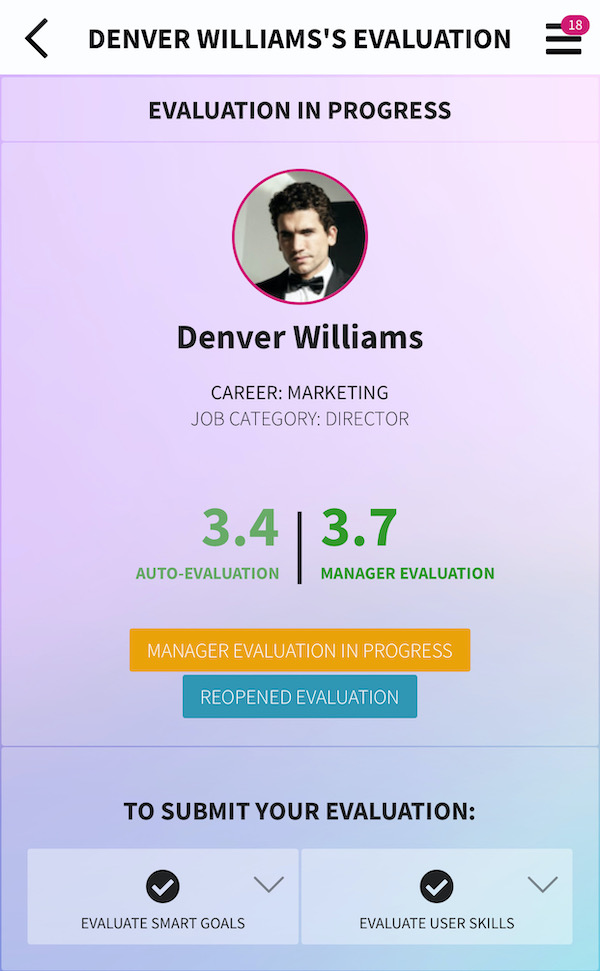

The importance of a Performance Evaluation and Potential Management process
Knowing some metrics in your company can give you valuable knowledge and help you anticipate some important decision making.
With GFoundry, the answers to some important questions are just a click away:
- Which employees are most likely to leave the company?
- Who are the employees with the highest potential?
- Who might succeed in a certain function?
- Who are the future leaders of the company?
- Which competencies does the company need to develop internally?
How does Performance Evaluation work?
Usually, in a more traditional process, it is possible to evaluate Objectives and Competencies. There are several evaluation models to assess the performance of your employees:
-
Top-Down Evaluation
-
Management by Objectives (MBO)
-
Self-Assessment
-
360º Feedback and Evaluation
A top-down evaluation involves the assessment of an employee by a direct manager and is focused on the evaluation of goals and competencies.
Usually, this evaluation is complemented with the employee’s self-assessment, in order to promote a healthy discussion about the employee’s performance between them and their manager.
The results of this method can be used for salary increases and promotions.
Management by Objectives (MBO) involves management and employee participation in defining their objectives within the organisation.
After goals are defined and agreed upon, management uses the end-of-period results to obtain and provide feedback on the employee.
This assessment is extremely focused on the performance of the employee in the achievement of their objectives, unlike other types of assessment that contemplate the evaluation of competencies.
Self-assessment is a performance evaluation process done by the employees themselves.
The employee will compare their actual performance with the goals that have been set by their manager. The results of this method are usually the achievement of objectives, problem solving skills, communication skills and teamwork.
There is usually a professional development or growth plan developed by the employee that lists the ways in which they plan to increase their performance. This may include additional training, education or higher productivity targets.
The 360º assessment includes feedback and evaluation from peers, managers and even business partners and/or customers.
The feedback is collected from various perspectives, based on the relationship between the parties, and can be used to design a skills development plan and set goals for each employee.
This method is generally not associated with the development of plans for salary increases or promotions. It is mainly used for self-development.
Evaluation cycles
Evaluation cycles refer to specific periods or timeframes during which performance evaluations and assessments take place. These cycles define the duration and frequency of evaluating employee performance within the platform.
Objectives Management & Individual Development Plans
After completing an evaluation cycle, it is possible to prepare for the next cycle. The employee will be able to define not only their objectives for the next year, but will also be able to define their Individual Development Plans (IDPs).
Later, the manager will be responsible for approving, editing or even adding new objectives and/or IDPs.
Finally, it is possible to make available to employees questionnaires on mobility expectations and/or change of function within the company.
All this information is then made available to the manager, so that they can make decisions according to the expectations shown by their team members. Furthermore, this information is also made available to the Human Resources Manager, who will have a general overview of the organisation.
Touchpoints
A good practice in the management of Performance Evaluation processes is directly related to the continuity of the process throughout the year.
In GFoundry, it is possible to define touchpoint periods, where employees can review their goals, their Individual Development Plans and also fill out a form that can guide the conversation between employee and manager. In this way, it is possible to guarantee the continuity of the whole process, ensuring regular monitoring of employee performance.
How does Potential Management work?
In addition to performance evaluation, with the Evaluation and Careers module, you can also manage your employees’ Potential and Career Management process. At this stage, responsibility is placed on the managers who are responsible for elements of their teams, having a clear perception not only of each one’s performance, but also a perception of their potential within the organisation.
This process may be divided into 3 parts:
-
Assessment of Potential | 9-Box Matrix;
-
Evaluation of Exit Risk (Churn Rate);
-
Evolutive Options.
9-Box Matrix
By identifying the employee’s level of potential, it is possible to fill in a form where behaviours related to high potential profiles in the organisation are identified, which will result in a quantitative score.
This score will serve as the basis for feeding the potential Matrix – the 9-Box Matrix. This matrix relates the performance and potential of employees, placing them in quadrants according to their quantitative scores on each of the variables.
Churn Rate
A questionnaire can be made available to the manager to assess the employee’s churn rate, based on the manager’s experience with the employee.
This information is crucial in order to identify the profiles with the highest risk of leaving the organisation and which will have a high impact on the business if this happens. In this way, any Human Resources manager will be able to have a generalised view of the risk of team members leaving, enabling early decision making.
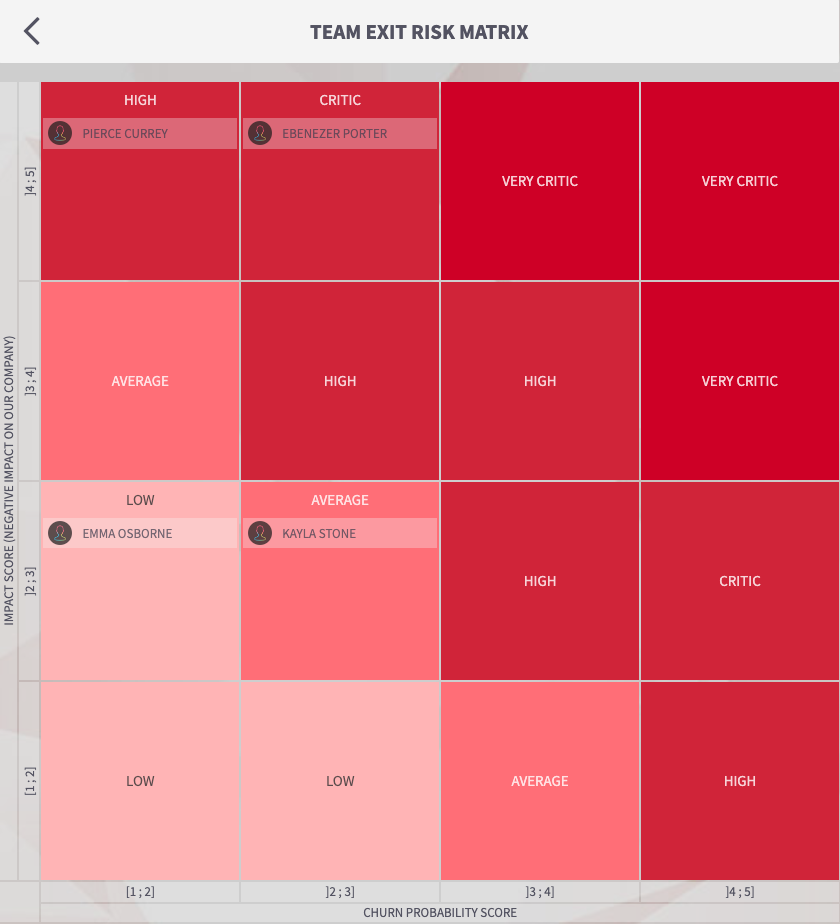
Employee’s Evolutive Options
It is possible to have a questionnaire about the employee’s Evolutive Options.
This questionnaire allows you to identify the aspects that lead you to believe that the employee will be (or not) ready to accept a new challenge in the organisation, either in a higher function or in another function in another area.
All this information serves to support decision-making with regard to changes in organisational structure and employee positions.
Advanced Dashboards
At the end of the process, and after filling in all the forms, the manager will have access to a dashboard with an overview of the employee’s performance and potential.
Some dashboards are provided, with indicators of employees’ performance and potential, resulting from their performance evaluation. All these indicators are available on the platform and may also be exported in xlsx files.
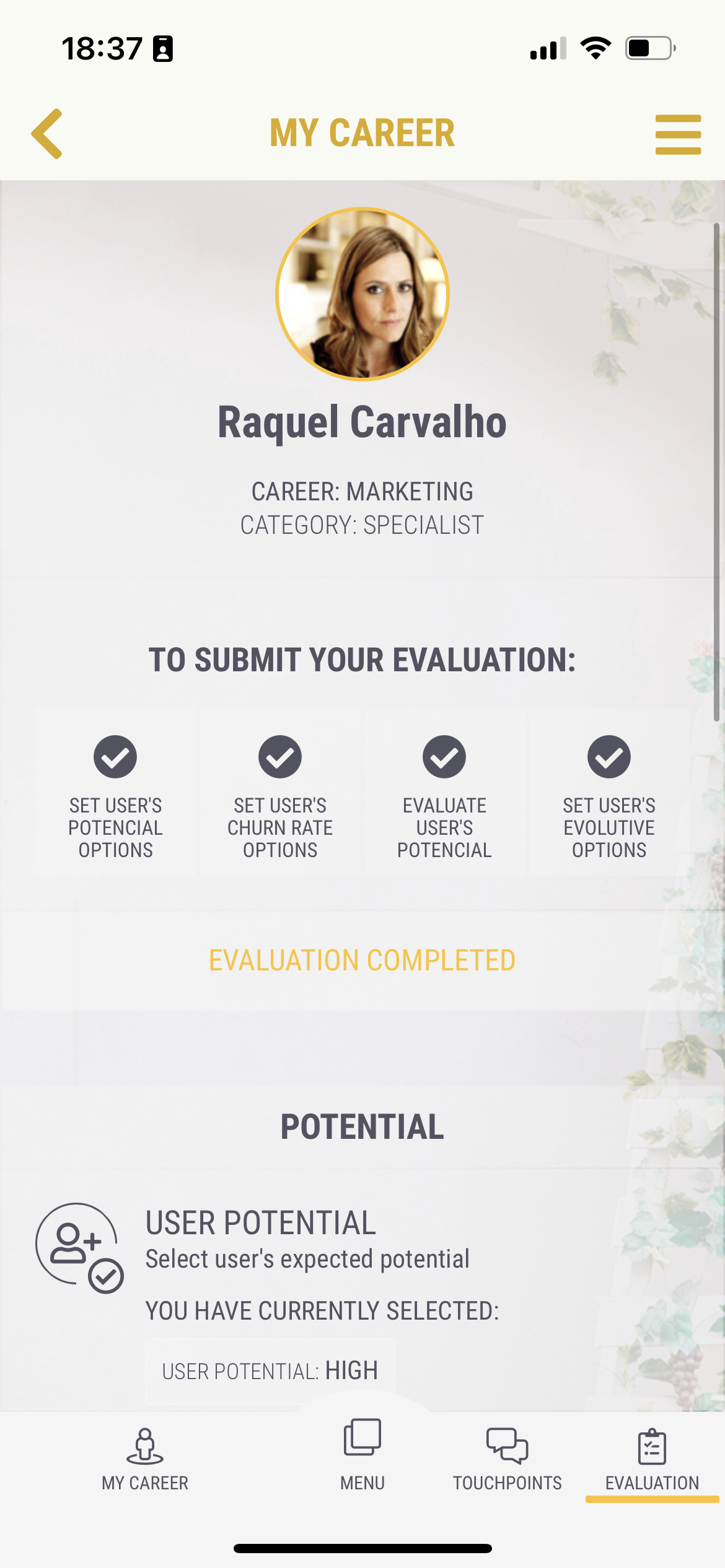
How do these processes impact Talent Management in my organisation?

Talent Management does not start (or end) with the Performance Evaluation process. Rather, it is just one of the components that are part of the People Management in an organisation.
You can transform your employees’ talent cycle into unforgettable digital experiences by implementing our modules at the various stages of the talent cycle in your organisation. There are 12 modules that enable you to track employees throughout their journey within your organisation.
For example, when the employee defines their Individual Development Plans, these may be directly linked to the content available in the Learn Module, so that the employee can choose the content that best fits their training needs.
Subscribe to GFoundry Newsletter: Weekly Insights on HR’s Most Pressing Topics
Keep on reading
Ready to get started?
Take the next step and learn more about how GFoundry can help you.


